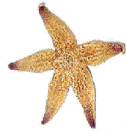Department of Chemistry
Document Type
Article
Date of this Version
4-2009
Abstract
Holocarboxylase synthetase (HCS) catalyzes the binding of the vitamin biotin to carboxylases and histones. Carboxylases mediate essential steps in macronutrient metabolism. For example, propionyl- CoA carboxylase (PCC) catalyzes the carboxylation of propionyl-CoA in the metabolism of oddchain fatty acids. HCS comprises four putative domains, i.e., the N-terminus, the biotin transfer/ATP binding domain, a putative linker domain, and the C-terminus. Both N- and C-termini are essential for biotinylation of carboxylases by HCS, but the exact functions of these two domains in enzyme catalysis are unknown. Here we tested the hypothesis that N- and C-termini play roles in substrate recognition by HCS. Yeast-two-hybrid (Y2H) assays were used to study interactions between the four domains of human HCS with p67, a PCC-based polypeptide and HCS substrate. Both N- and C-termini interacted with p67 in Y2H assays, whereas the biotin transfer/ATP-binding and the linker domains did not interact with p67. The essentiality of N- and C-termini for interactions with carboxylases was confirmed in rescue experiments with mutant Saccharomyces cerevisiae, using constructs of truncated human HCS. Finally, a computational biology approach was used to model the 3D structure of human HCS and identify amino acid residues that interact with p67. In silico predictions were consistent with observations from Y2H assays and yeast rescue experiments, and suggested docking of p67 near Arg508 and Ser515 within the central domain of HCS.



Comments
Published in final edited form as: Mol Genet Metab. 2009 April ; 96(4): 183–188. doi:10.1016/j.ymgme.2008.12.006. © 2008 Elsevier Inc.